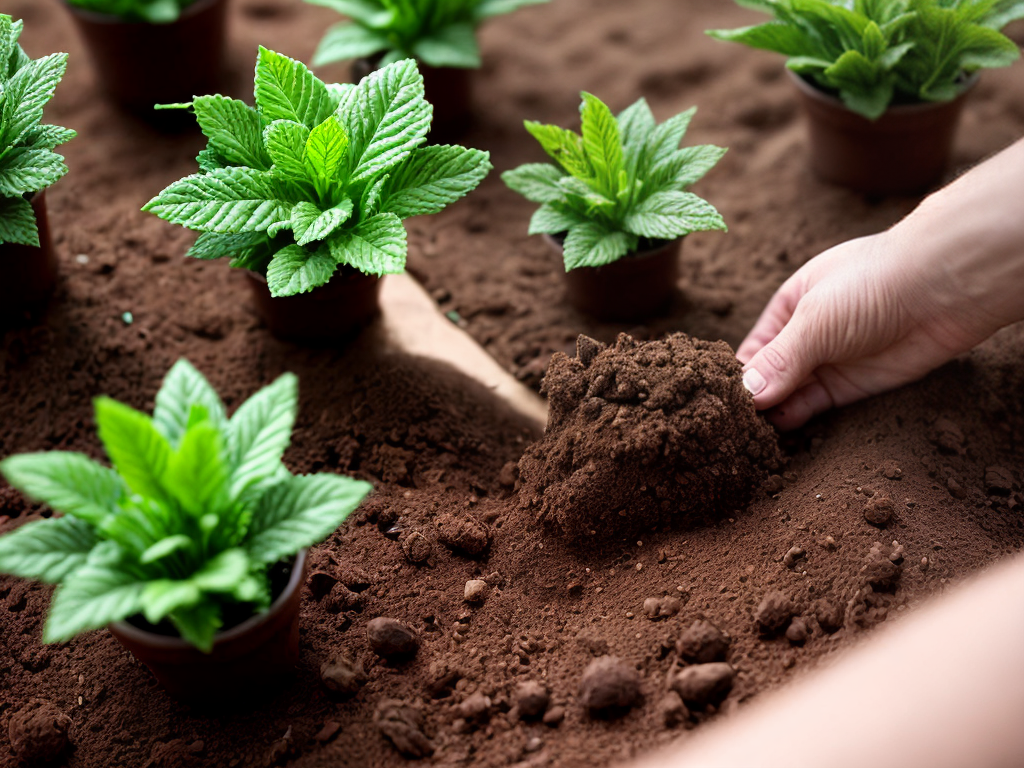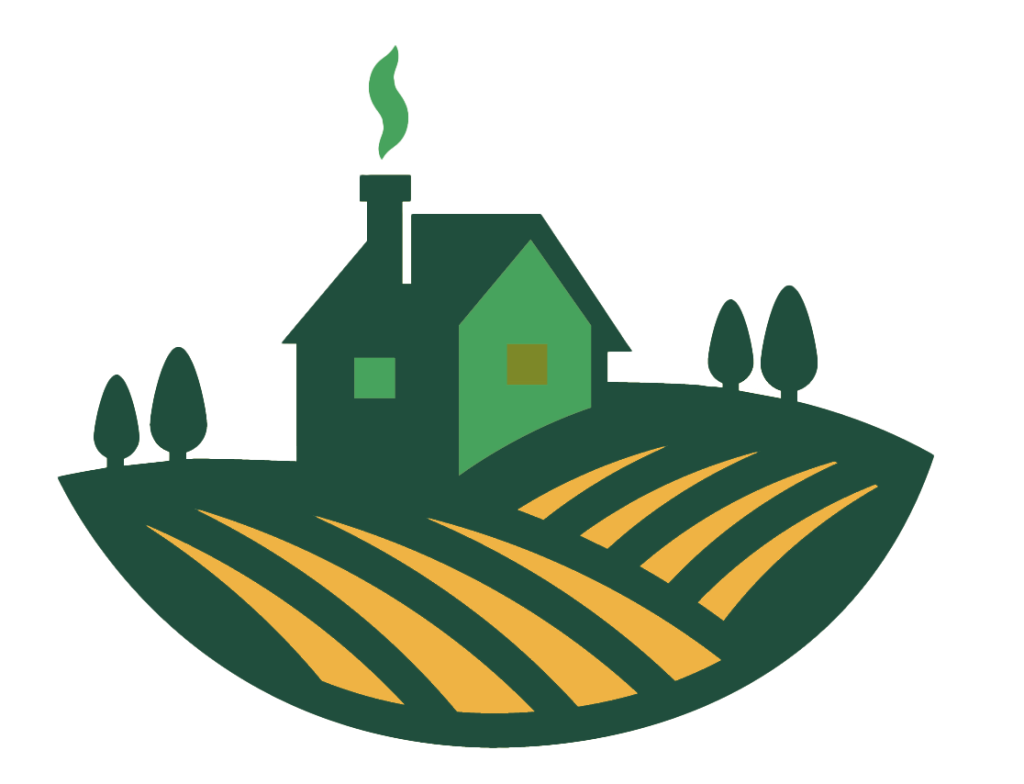
As an avid gardener, I’ve come to realize that organic seed cultivation is like tending to a delicate ecosystem. Each technique plays a vital role in nurturing the seeds towards bountiful harvests. In this article, I’ll share the top techniques I’ve discovered through my own experimentation and research. From soil preparation to organic pest control, we’ll delve into the intricacies of seed selection, germination, and more. Get ready to unlock the secrets of successful organic seed cultivation.
Soil Preparation
To prepare the soil for organic seed cultivation, I till the land using a rototiller to break up the compacted earth. This is an essential step in creating a healthy and fertile environment for the seeds to grow. After tilling, I incorporate compost into the soil to improve its nutrient content and overall structure. Composting techniques play a crucial role in organic farming, as they help recycle organic matter and provide a rich source of nutrients for the plants. Additionally, I practice crop rotation to prevent soil depletion and control pests and diseases. By alternating the types of crops grown in a particular area, I can optimize soil fertility and reduce the risk of pest infestations. These techniques ensure that the soil is primed for successful organic seed cultivation.
Seed Selection
For seed selection in organic seed cultivation, I carefully choose high-quality seeds that are adapted to my specific growing conditions. This is a crucial step in ensuring a successful and sustainable crop. Here are three important factors to consider when selecting seeds:
-
Seed Viability Testing: Before planting, it is essential to assess the viability of the seeds. This can be done through various methods such as the germination test, where seeds are placed in a controlled environment and observed for sprouting. Only seeds with a high germination rate should be selected.
-
Adaptability: Different varieties of seeds have varying levels of adaptability to specific growing conditions. It is important to choose seeds that are well-suited to your region’s climate, soil type, and pest pressures. This will increase the chances of success and minimize the need for additional inputs.
-
Genetic Integrity: Organic seed cultivation emphasizes the use of non-GMO seeds. It is essential to select seeds from reliable sources that guarantee genetic integrity and are free from genetic modifications. This ensures the preservation of biodiversity and the integrity of organic farming practices.
Seed Soaking
I soak the seeds to enhance germination and promote healthy seedling development. Seed soaking benefits include improving water absorption, breaking seed dormancy, and accelerating germination. Soaking seeds before planting can increase the chances of successful germination by softening the seed coat and allowing water to penetrate more easily. This process also helps to activate enzymes responsible for breaking down stored nutrients, making them available for the developing seedling. To soak seeds, start by selecting a clean container and filling it with room temperature water. Place the seeds in the water and let them soak for the recommended time, which can vary depending on the type of seed. After soaking, drain the water and plant the seeds immediately for optimal results. Remember to adjust the soaking time and water temperature based on the specific requirements of the seeds being used.
Germination Techniques
One essential aspect of organic seed cultivation is implementing effective germination techniques. Proper germination techniques can significantly improve germination rates and help overcome seed dormancy. Here are three key techniques to consider:
-
Scarification: Some seeds have hard outer coats that prevent water absorption and germination. Scarification involves physically breaking or scratching the seed coat to allow moisture to penetrate and trigger germination.
-
Stratification: This technique is particularly useful for seeds that require a period of cold temperatures to break dormancy. By exposing the seeds to a period of cold, usually in a refrigerator, stratification simulates winter conditions and helps to synchronize germination.
-
Pre-soaking: Pre-soaking seeds in water for a specific period helps to soften the seed coat and encourage germination. This technique is particularly effective for seeds with hard or impermeable seed coats.
Implementing these germination techniques can greatly enhance the success of organic seed cultivation by improving germination rates and breaking seed dormancy.
Transplanting Seedlings
After successfully germinating the seeds, the next step in organic seed cultivation involves transplanting the seedlings. Transplanting is the process of moving the seedlings from the germination container into the garden or a larger pot. Before transplanting, it is important to harden off the seedlings. Hardening off is the process of gradually acclimating the seedlings to outdoor conditions, such as temperature and sunlight, to prevent transplant shock. This can be done by gradually exposing the seedlings to outdoor conditions over a period of one to two weeks. Timing considerations are crucial when transplanting seedlings. It is important to wait until the seedlings have developed sturdy stems and a good root system before transplanting. Additionally, transplanting should ideally be done on a cloudy day or in the evening to minimize stress on the seedlings.
Watering and Irrigation Methods
When it comes to watering and irrigation methods for organic seed cultivation, there are a few key points to consider. One important decision is choosing between drip and sprinkler systems. Drip systems deliver water directly to the roots, minimizing water waste and reducing the risk of disease. Sprinkler systems, on the other hand, provide uniform coverage but may result in more water evaporation. Another crucial aspect is conserving water usage by implementing efficient watering schedules and techniques. Additionally, rainwater harvesting can be a sustainable solution for irrigation, reducing reliance on external water sources.
Drip Vs. Sprinkler Systems
I prefer using a drip irrigation system for watering and irrigating organic seeds due to its precise and efficient water delivery. Compared to sprinkler systems, drip irrigation offers several advantages:
- Water Efficiency: Drip irrigation systems deliver water directly to the plant’s root zone, minimizing water wastage through evaporation or runoff.
- Uniform Water Distribution: Drip systems ensure even distribution of water, preventing over- or under-watering of plants.
- Reduced Weed Growth: By delivering water directly to the plant’s root zone, drip irrigation systems help reduce weed growth as water is not wasted on unplanted areas.
Drip irrigation is an essential technique in organic seed cultivation, as it not only conserves water but also ensures that plants receive the necessary moisture for optimal growth. Its precise water delivery system makes it a preferred choice for organic farmers looking to maximize water efficiency and minimize environmental impact.
Conserving Water Usage
Continuing from the previous subtopic, I consistently use water conservation methods in organic seed cultivation, particularly in terms of watering and irrigation techniques. Efficient watering is crucial in conserving water and ensuring optimal growth for organic seeds. One technique I employ is drip irrigation, which delivers water directly to the base of the plants, minimizing water loss through evaporation and runoff. This method allows for precise control over the amount of water each plant receives, avoiding overwatering and reducing water wastage. Additionally, I implement mulching to retain moisture in the soil, reducing the need for frequent watering. By employing these water conservation techniques, I am able to minimize water usage while still providing adequate hydration for my organic seeds, promoting sustainable and environmentally-friendly cultivation practices.
Rainwater Harvesting
To maximize water conservation in organic seed cultivation, I rely on rainwater harvesting as an efficient watering and irrigation method. Rainwater harvesting involves collecting rainwater and storing it for later use. This method offers several advantages, including reducing reliance on municipal water sources and minimizing water bills. Here are three key benefits of rainwater harvesting:
- Rainwater filtration: Before storing rainwater, it goes through a filtration process to remove any impurities or contaminants. This ensures that the water used for irrigation is clean and safe for plants.
- Greywater reuse: Rainwater harvesting systems can also be designed to collect greywater, which is wastewater from household activities like dishwashing and laundry. By reusing greywater for irrigation, we can further reduce water consumption and promote sustainability.
- Self-sufficiency: Harvesting rainwater allows us to become more self-sufficient when it comes to water supply. By relying on natural rainfall, we can reduce our dependence on external water sources, especially during dry seasons or in areas with limited access to water.
Implementing rainwater harvesting systems is a practical and effective way to conserve water in organic seed cultivation. By utilizing this method, we can contribute to a more sustainable and environmentally-friendly farming practice.
Organic Pest Control
When it comes to organic pest control, there are several effective techniques to consider. One approach is using natural predator repellents, such as garlic or hot pepper sprays, to deter pests from your plants. Another strategy is companion planting, where certain plants are grown together to repel pests or attract beneficial insects. Additionally, creating a habitat that attracts beneficial insects, like ladybugs or lacewings, can help control pest populations naturally.
Natural Predator Repellents
In my experience, using natural predator repellents is an effective way to control pests in organic seed cultivation. Natural pest control methods are essential for maintaining the health and productivity of organic crops while minimizing the use of harmful chemicals. Integrated pest management (IPM) is a holistic approach that combines various techniques to manage pests, and natural predator repellents play a crucial role in this system. Here are three effective natural predator repellents for organic pest control:
-
Beneficial insects: Encouraging the presence of beneficial insects like ladybugs, lacewings, and parasitic wasps can help control pest populations. These insects feed on pests or their eggs, providing a natural form of pest control.
-
Companion planting: Interplanting crops with herbs, flowers, or other plants that repel pests can help deter insects. For example, planting marigolds alongside tomatoes can repel aphids and whiteflies.
-
Physical barriers: Using physical barriers like nets, row covers, or sticky traps can prevent pests from reaching the crops and causing damage.
Companion Planting Strategies
I’ve found that incorporating companion planting strategies has been a game-changer for organic pest control in my seed cultivation. Companion planting involves strategically planting different species of plants together to maximize their benefits and deter pests. One of the main benefits of companion planting is its ability to attract beneficial insects that prey on pests. For example, planting marigolds alongside tomatoes can help repel nematodes, while attracting ladybugs that feed on aphids. Another example is planting basil near vegetables like tomatoes and peppers, which can help repel pests like whiteflies and aphids. Additionally, companion plants can also help improve soil health by providing nutrients and suppressing weeds. By carefully selecting companion plants, organic growers can create a healthier, more balanced ecosystem in their gardens, reducing the need for chemical pest control methods.
Beneficial Insect Attraction
Incorporating companion planting strategies in my organic seed cultivation has significantly enhanced my ability to attract beneficial insects for organic pest control. When it comes to beneficial insect management and attracting pollinators, there are several techniques that I have found to be highly effective:
- Diverse plant selection: By planting a variety of flowering plants, I am able to attract a wide range of beneficial insects, including pollinators like bees and butterflies.
- Attractant plants: Some plants, such as marigolds and dill, have the ability to attract specific beneficial insects like ladybugs and lacewings, which are natural predators of common garden pests.
- Providing habitat: Creating a welcoming environment for beneficial insects is crucial. I incorporate features like insect hotels, water sources, and sheltered areas to encourage their presence in my garden.
Mulching Techniques
For mulching techniques in organic seed cultivation, I prefer using straw as a protective ground cover. Mulching provides numerous benefits for organic seed cultivation. Firstly, it helps to suppress weed growth, reducing competition for nutrients and water. This is especially important in the early stages of seedling development. Additionally, mulching helps to regulate soil temperature, keeping it cooler in hot weather and warmer in cold weather. It also helps to retain soil moisture, reducing the need for frequent watering. Mulching materials such as straw, when applied in a thick layer, can also act as a physical barrier, protecting the soil from erosion caused by heavy rainfall. Overall, mulching is an effective technique for organic seed cultivation, providing essential benefits for the growth and development of seeds.
Fertilization Methods
While fertilization methods play a crucial role in organic seed cultivation, it is important to choose the right organic fertilizers to promote healthy growth and development. Proper fertilizer application and nutrient management are essential for maximizing yields and maintaining soil health. Here are three key points to consider when it comes to fertilization methods:
-
Organic compost: Compost is a valuable source of nutrients and organic matter. It enriches the soil, improves its structure, and enhances its ability to hold water and nutrients.
-
Cover crops: Planting cover crops such as legumes helps to fix nitrogen in the soil, reducing the need for synthetic fertilizers. They also provide organic matter and prevent erosion.
-
Crop rotation: Rotating crops helps to break pest and disease cycles, improve soil fertility, and prevent nutrient depletion. It allows for more efficient nutrient absorption and reduces the risk of nutrient imbalances.
Harvesting and Seed Saving
When it comes to harvesting and saving organic seeds, there are a few important points to consider. Optimal seed storage is crucial to maintaining seed viability and ensuring future successful germination. Seed viability testing can help determine the quality and viability of the seeds before storing or planting them. Additionally, preventing cross-pollination is essential to maintaining the purity and integrity of the seeds, especially for open-pollinated and heirloom varieties.
Optimal Seed Storage
To ensure the longevity and viability of organic seeds, I prioritize optimal seed storage techniques. Proper seed storage is crucial for maintaining the quality and viability of seeds for future planting seasons. Here are three key strategies for optimal seed storage:
-
Temperature control: Storing seeds in a cool, dry place is essential to prevent moisture accumulation and fungal growth. Ideally, seeds should be kept at a temperature between 32°F (0°C) and 41°F (5°C) to maintain their viability.
-
Humidity management: Seeds should be stored in a low humidity environment to prevent mold and fungal infections. Aim for a relative humidity level of 30% to 50% to keep the seeds dry and free from moisture-related issues.
-
Darkness: Exposure to light can cause seed deterioration. Storing seeds in opaque containers or keeping them in a dark storage area helps protect them from light damage.
Seed Viability Testing
Now, I will delve into the process of seed viability testing, which is essential for harvesting and saving high-quality organic seeds. Seed viability analysis involves determining the ability of seeds to germinate and produce healthy plants. This testing is crucial to ensure that the seeds you save for future planting are viable and will result in successful crops.
There are several viability testing techniques that can be used, including the standard germination test, tetrazolium test, electrical conductivity test, and X-ray test. Each technique provides valuable information about the quality and viability of the seeds.
To make it easier to understand, here is a table summarizing these viability testing techniques:
| Viability Testing Technique | Methodology |
|---|---|
| Standard Germination Test | Counting the number of seeds that successfully germinate under controlled conditions. |
| Tetrazolium Test | Staining seeds with tetrazolium solution to determine viability based on color changes. |
| Electrical Conductivity Test | Measuring the electrical conductivity of seed extracts to assess seed deterioration. |
| X-ray Test | Using X-rays to visualize the internal structure of seeds and detect abnormalities. |
Preventing Cross-Pollination
To prevent cross-pollination and ensure the purity of harvested seeds, I carefully isolate plants of the same variety in my organic seed cultivation process. This practice is crucial for preventing self-pollination and maintaining the genetic integrity of the seeds. Here are three important techniques I employ to prevent cross-pollination:
- Physical barriers: I use physical barriers, such as netting or cages, to physically separate plants and prevent unwanted pollen transfer between them.
- Timing: I stagger the flowering times of different plant varieties to minimize the chances of cross-pollination. This ensures that each plant has already completed pollination before the others start flowering.
- Pollinator-friendly practices: I attract beneficial insects and birds to my garden to encourage pollination. By providing these pollinators with diverse food sources and habitats, I reduce the need for them to visit different plant varieties, thereby reducing the risk of cross-pollination.


